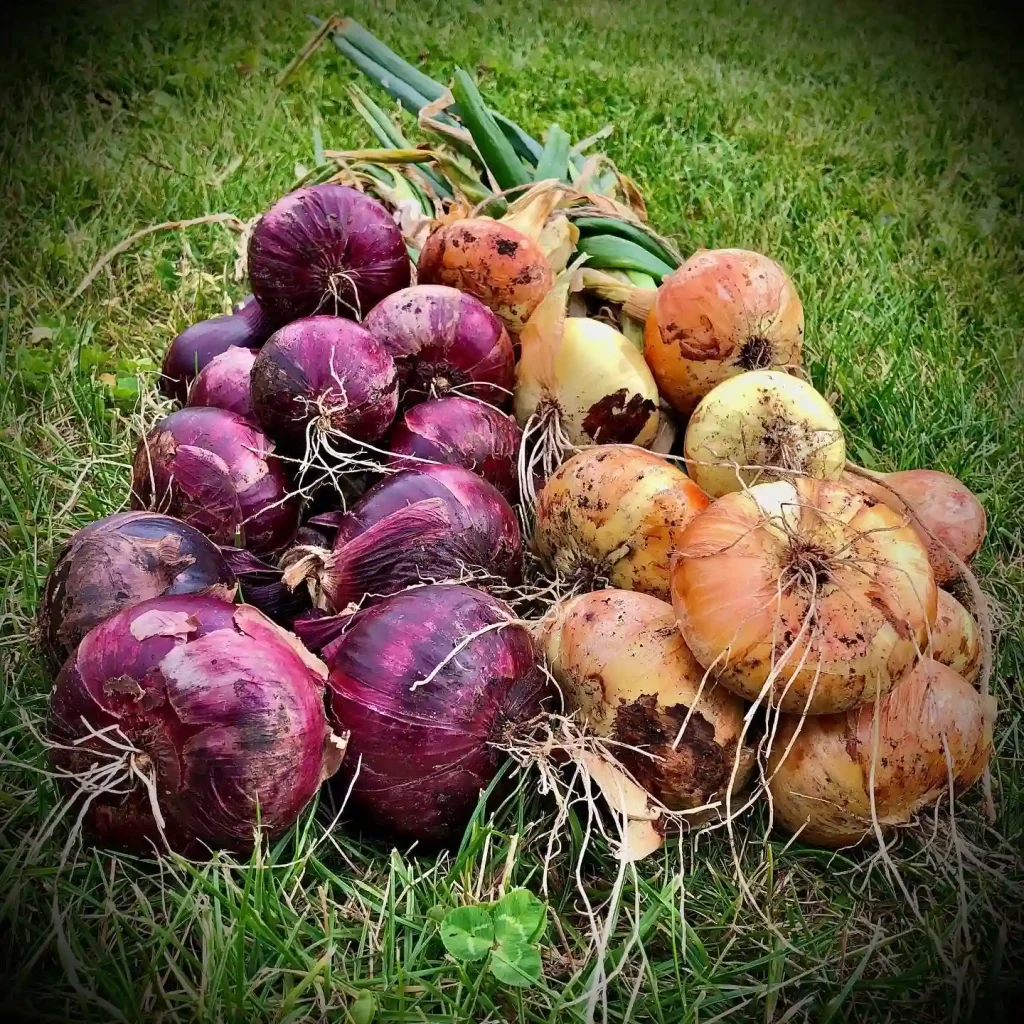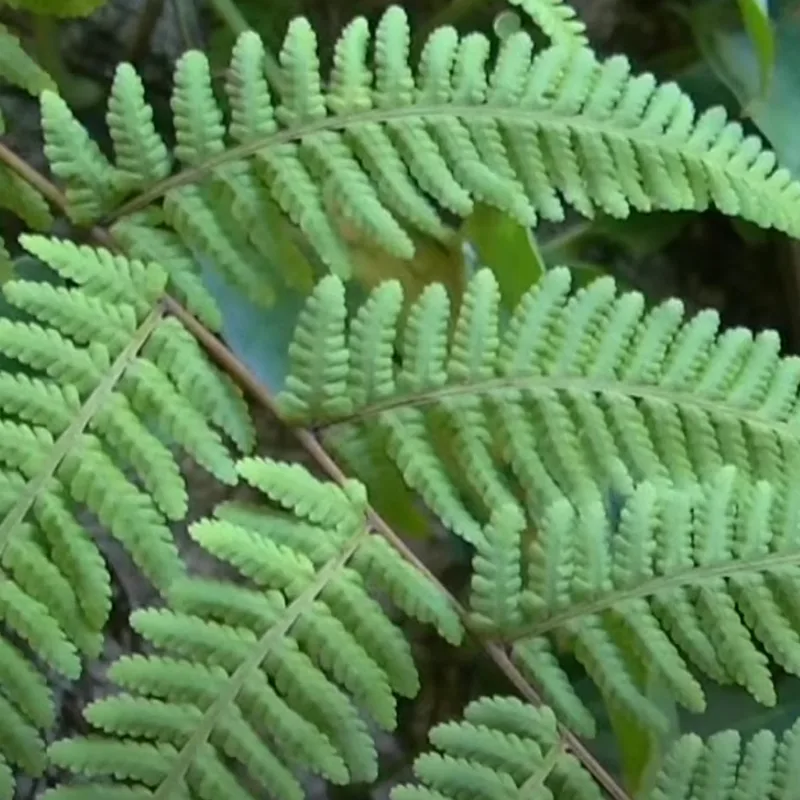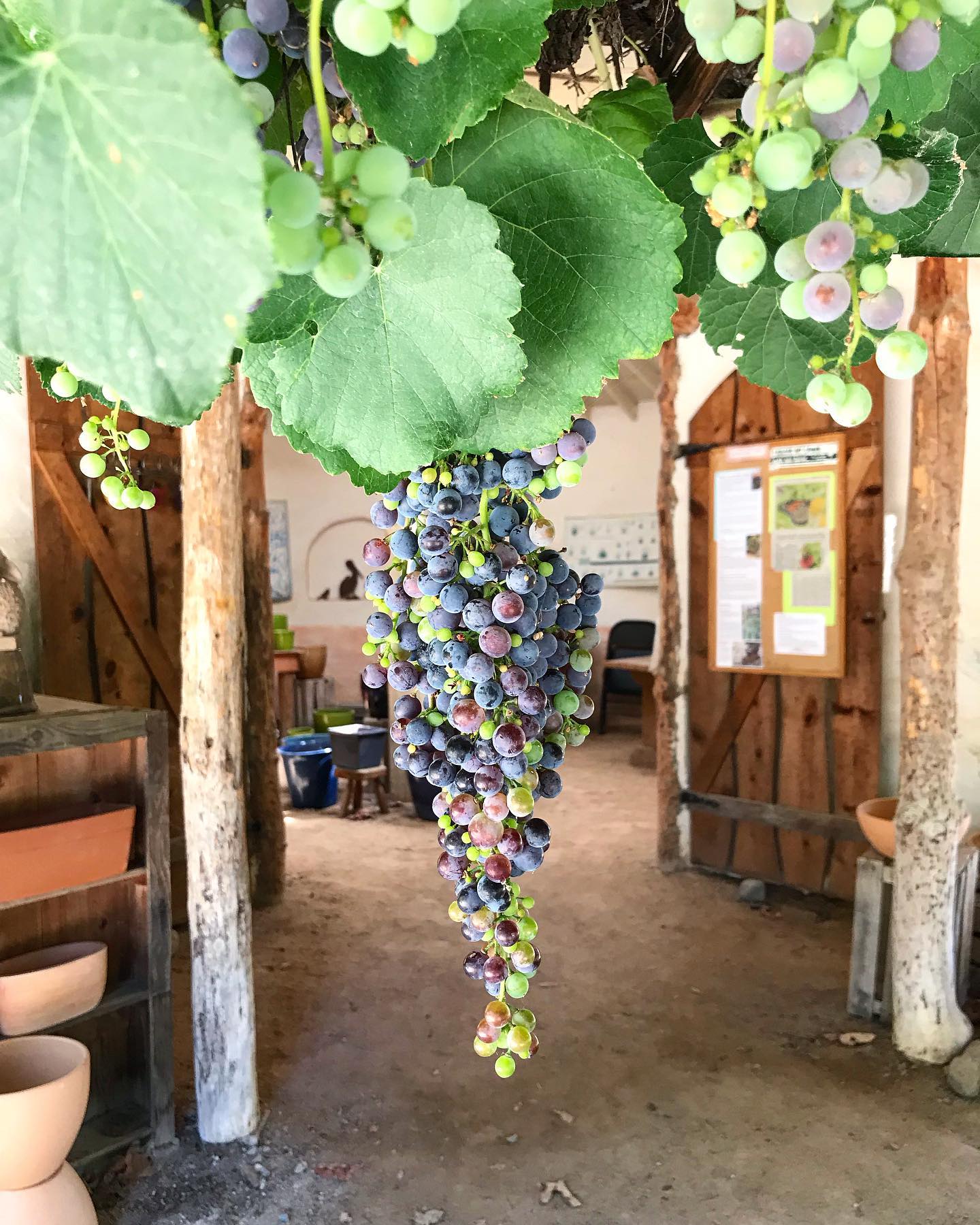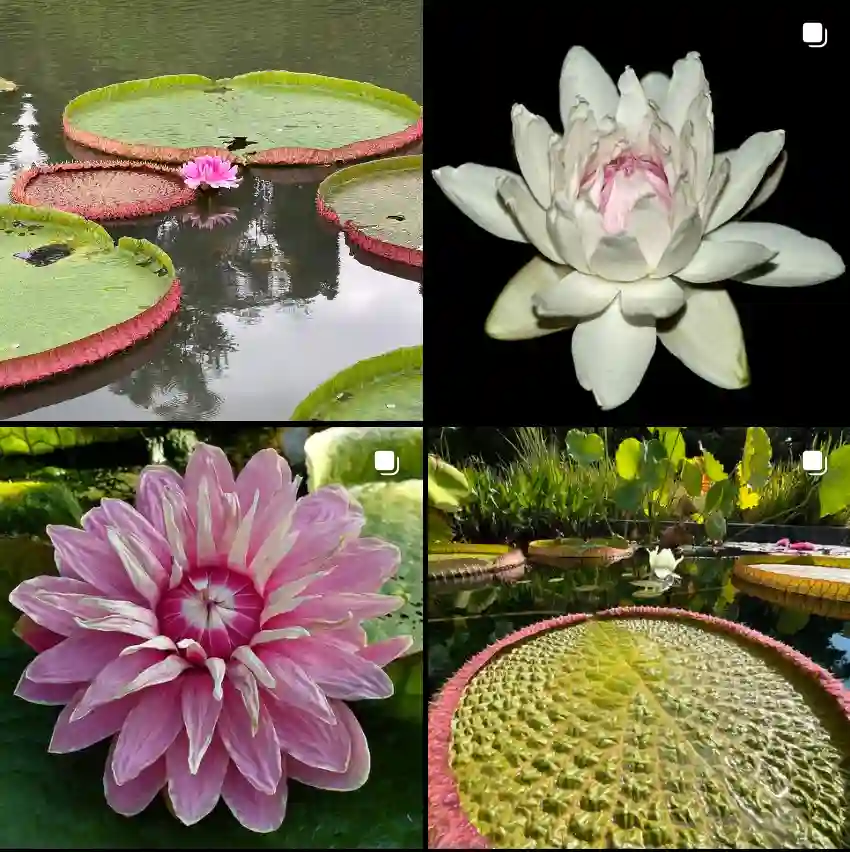
1. Introduction: Discovering the Distinctive Monstera Acacoyaguensis
The Monstera Acacoyaguensis is a highly sought-after flowering vine, cherished by plant enthusiasts for its unique and striking perforated leaves. Hailing from the lush tropical rainforests of Mexico, Guatemala, and Belize, this magnificent plant brings a touch of exotic beauty to any indoor space.
Often confused with its more common relative, Monstera Deliciosa, the Monstera Acacoyaguensis possesses distinct features that set it apart. While Monstera Deliciosa is known for its heart-shaped leaves with deep, irregular splits, the Monstera Acacoyaguensis boasts large, oval leaves characterized by prominent, often random perforations. This unique fenestration gives it a captivating “Swiss cheese” appearance, making it a true showstopper.
Beyond its captivating aesthetics, the Monstera Acacoyaguensis offers the satisfaction of cultivating a truly distinctive plant, and like other Monsteras, it can contribute to improving indoor air quality.
2. Mastering Optimal Growing Conditions for Your Monstera Acacoyaguensis
To ensure your Monstera Acacoyaguensis thrives and displays its distinctive beauty, providing ideal environmental conditions is paramount.
| Problem | Symptoms | Root Cause | Solution |
|---|---|---|---|
| Overwatering | Yellow leaves, mushy stem base, root rot | Constantly wet soil, poor drainage | Allow soil to dry completely between waterings; ensure good drainage; repot if necessary |
| Underwatering | Wilting, dry and crispy leaves, curled edges | Insufficient water, soil too dry for too long | Increase watering frequency; ensure consistent moisture without waterlogging |
| Pest Infestation | Presence of mealybugs, spider mites, or scale insects, sticky residue, tiny webs | Common houseplant pests | Treat with insecticidal soap or neem oil; maintain proper humidity; inspect regularly |
| Light Issues | Leggy growth, small leaves, lack of perforations (too little light), scorched leaves (too much direct light) | Insufficient or excessive light exposure | Relocate to a brighter indirect light spot; use sheer curtains for diffusion; consider grow lights |
| Nutrient Deficiency | Overall yellowing of leaves (chlorosis), stunted growth | Lack of essential nutrients in the soil | Fertilize regularly during the growing season with a balanced liquid fertilizer |
| Brown Leaves/Tips | Crispy brown edges or entire leaves turning brown | Low humidity, inconsistent watering, over-fertilization | Increase humidity; adjust watering schedule; flush soil to remove excess salts |
| Lack of Fenestrations | Leaves not developing characteristic holes or splits | Immature plant, insufficient light, low humidity, inadequate nutrients | Provide optimal light and humidity; ensure proper fertilization; be patient with young plants |
Light Requirements: The Key to Stunning Fenestrations
The Monstera Acacoyaguensis flourishes in bright, indirect light. Placing it near a window where it receives diffused sunlight is ideal. Direct, harsh sunlight can scorch its beautiful leaves, leading to unsightly brown spots. Conversely, insufficient light will hinder its growth, result in smaller leaves, and, most importantly, prevent the development of its iconic perforations. If your plant isn’t showing its characteristic splits, it’s often a sign it needs more bright, indirect light.
Watering Wisdom: Finding the Right Balance
Consistent watering is vital for a healthy Monstera Acacoyaguensis. Water your plant thoroughly when the top inch of the soil feels dry to the touch. It’s crucial to allow excess water to drain completely from the pot to prevent waterlogging, which can lead to root rot – a common issue for many houseplants. While underwatering can cause wilting and crispy leaves, overwatering is a more frequent killer. During winter months or periods of lower growth, reduce watering frequency.
The Perfect Potting Mix: Essential for Root Health
A well-draining potting mix is non-negotiable for the Monstera Acacoyaguensis. An ideal mix will be airy and prevent water from sitting stagnant around the roots. Consider a blend of high-quality potting soil amended with perlite, orchid bark, and coco coir. This combination provides excellent drainage and aeration, which are crucial for preventing root rot and supporting robust root development.
Temperature & Humidity: Recreating Its Tropical Home
As a tropical plant, Monstera Acacoyaguensis thrives in warm conditions. Maintain indoor temperatures between 65°F and 80°F (18°C–27°C). Avoid exposing the plant to sudden temperature drops or cold drafts, as these can stress the plant and inhibit growth.
This Monstera also prefers moderate to high humidity levels, ideally above 60%. In drier indoor environments, especially during winter, consider using a humidifier, placing the pot on a pebble tray filled with water (ensuring the pot isn’t sitting in water), or grouping it with other humidity-loving plants to create a beneficial microclimate. Brown leaf tips or edges are often an indicator of insufficient humidity.
Placement & Support: Encouraging Upward Growth
Choose a location for your Monstera Acacoyaguensis that offers consistent bright, indirect light and stable temperatures, away from drafts. Living rooms, offices, or well-lit bathrooms are often excellent spots.
As a vining plant, Monstera Acacoyaguensis benefits significantly from a support structure to climb, such as a moss pole or a stake. Providing vertical support mimics its natural climbing habit in the rainforest and encourages the development of larger leaves with more pronounced fenestrations.
3. Essential Care Practices for a Thriving Monstera Acacoyaguensis
Fertilization: Fueling Lush Growth
During its active growing season (spring and summer), fertilize your Monstera Acacoyaguensis every 2-4 weeks. Use a balanced liquid houseplant fertilizer, diluted to half or quarter strength according to the product’s instructions to avoid over-fertilization. Reduce or cease fertilization during the fall and winter months when the plant’s growth naturally slows down. Yellowing leaves or stunted growth can be signs of a nutrient deficiency.
Pruning & Cleaning: Maintaining Health and Aesthetics
Regularly inspect your plant and remove any yellow, damaged, or decaying leaves using sharp, sterilized pruning shears. This not only keeps the plant looking tidy but also helps it redirect energy to healthy new growth. If you wish to encourage a bushier growth habit, you can pinch back new growth points.
Dust can accumulate on the large leaves, hindering photosynthesis. Gently wipe down the leaves with a soft, damp cloth every few weeks to keep them clean and allow for optimal light absorption.
Routine Maintenance: Staying Vigilant for Optimal Plant Health
Periodically rotate your Monstera Acacoyaguensis to ensure all sides receive adequate light, promoting even growth. Regularly check the leaves (tops and undersides) and soil for any early signs of pests or diseases. Prompt detection and treatment are key to preventing widespread problems.
4. Propagating Your Monstera Acacoyaguensis: Expanding Your Green Collection
Propagating Monstera Acacoyaguensis is a rewarding process, allowing you to create new plants from your existing one. Stem cuttings are the most common and effective method.
Step-by-step guide for successful stem cutting propagation:
- Select a Healthy Stem: Choose a healthy, mature stem section that has at least one node and one or two leaves. The node is where new roots and growth will emerge.
- Make the Cut: Using a clean, sharp knife or pruning shears, make a precise cut just below a node.
- Prepare the Cutting: Remove any leaves from the bottom of the cutting that would be submerged in your chosen propagation medium to prevent rot.
- Choose Your Propagation Medium:
- Water Propagation: Place the cutting in a glass of water, ensuring the node is fully submerged. Change the water every few days to keep it fresh.
- Sphagnum Moss/Perlite/Soil: Alternatively, plant the cutting directly into a moist mix of sphagnum moss, perlite, or a well-draining potting mix.
- Provide Optimal Conditions: Place the cutting in a warm spot with bright, indirect light. High humidity will significantly encourage root development. You can create a mini-greenhouse effect by covering the cutting with a clear plastic bag.
- Potting Up: Once a robust root system has developed (usually after several weeks, when roots are 2-4 inches long), carefully transplant the cutting into a pot filled with a suitable potting mix. Keep the soil consistently moist for the first week to help it acclimate.
5. Repotting Your Monstera Acacoyaguensis: Signs, Timing, and Techniques
When to Repot: Recognizing Root-Bound Signs
Monstera Acacoyaguensis typically requires repotting every 1-2 years, or when it shows signs of being root-bound. Younger, faster-growing plants may need it annually, while more mature specimens can go longer.
Key signs that your plant needs repotting:
- Roots are growing out of the drainage holes at the bottom of the pot.
- Roots are coiling tightly around the inside of the pot when you gently lift the plant.
- The plant’s growth has stunted, despite ideal care conditions.
- The soil is drying out much faster than usual, indicating a dense root ball.
- Water runs straight through the pot without being absorbed.
Best Time and Frequency for Repotting
The ideal time to repot your Monstera Acacoyaguensis is during early spring or early summer, just before its peak growing season. This allows the plant to quickly recover from the stress of repotting and put energy into new growth. While possible at other times if necessary, avoid repotting during winter when the plant is less active.
Choosing the Right Pot and Potting Mix
- Pot Size: Choose a new pot that is only 1-2 inches larger in diameter than the previous one. An excessively large pot can retain too much moisture, increasing the risk of root rot.
- Pot Material: Terracotta pots are excellent choices as they are porous and help wick away excess moisture, preventing the soil from becoming waterlogged. Pots with good drainage holes are essential, regardless of material.
- Potting Mix: Use the same well-draining, airy potting mix recommended for initial planting, ensuring it provides good aeration and drainage.
Step-by-Step Repotting Process
- Gather Supplies: Have your new pot, fresh potting mix, sharp pruning shears (for root trimming if needed), and a watering can ready.
- Remove from Old Pot: Gently slide the plant out of its current pot. If it’s stubborn, you might need to run a knife around the inner edge of the pot.
- Inspect Roots: Carefully examine the root ball. Loosen any tightly coiled roots and remove old, compacted soil. Trim any damaged, mushy, or circling roots with sterilized shears.
- Add Fresh Soil: Place a layer of fresh potting mix at the bottom of the new pot.
- Position the Plant: Center your Monstera Acacoyaguensis in the new pot, ensuring its base is at the same level as it was in the old pot. Fill around the root ball with more fresh potting mix, gently patting it down to remove air pockets.
- Water Thoroughly: Water the plant thoroughly after repotting. This helps settle the soil around the roots.
- Post-Repotting Care: Place the plant back in its usual spot. Avoid fertilizing for about 4-6 weeks to allow the roots to recover and acclimate to their new environment.
6. Troubleshooting Common Monstera Acacoyaguensis Problems
Most issues with Monstera Acacoyaguensis can be traced back to imbalances in its environment, particularly watering and light. Observing your plant’s leaves is often the first step in diagnosing a problem. Refer to the troubleshooting table at the beginning of this guide for quick solutions to common ailments.
7. Monstera Acacoyaguensis Toxicity: An Important Safety Note
Understanding Risks to Humans and Pets
Like many plants in the Araceae family, Monstera Acacoyaguensis contains insoluble calcium oxalate crystals, making it mildly toxic if ingested. While typically not fatal, it can cause significant irritation and discomfort.
Harmful Parts: All parts of the plant are considered toxic if consumed.
Recognizing Symptoms of Ingestion:
Symptoms in both humans and animals may include:
- Oral irritation, burning, and swelling of the mouth, tongue, and lips.
- Excessive drooling.
- Vomiting.
- Difficulty swallowing.
- Loss of appetite.
Prevention and Emergency Contacts
Prevention is Key: To ensure safety, always place your Monstera Acacoyaguensis out of reach of curious children and pets. High shelves or enclosed plant stands can be effective barriers.
Emergency Contacts: In case of suspected ingestion, contact a medical professional or veterinarian immediately. For pet-specific concerns, reach out to a pet poison helpline for guidance.
8. Conclusion: Enjoying the Unique Beauty of Your Monstera Acacoyaguensis
The Monstera Acacoyaguensis is a truly captivating plant, valued for its distinctive perforated leaves and tropical charm. By providing consistent bright, indirect light, appropriate watering, a well-draining potting mix, and attention to humidity and temperature, you can ensure your plant thrives. With proper care, your Monstera Acacoyaguensis will continue to be a stunning and unique addition to your indoor plant collection, bringing joy and a touch of the rainforest to your home.
If i die, water my plants!



